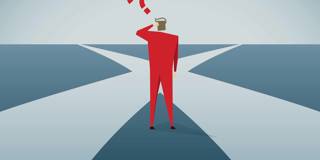OnPoint Subscriber Exclusive
The Big Picture brings together a range of PS commentaries to give readers a comprehensive understanding of topics in the news – and the deeper issues driving the news. The Big Question features concise contributor analysis and predictions on timely topics.

Which Exit?
Although lockdowns and social-distancing measures to combat the COVID-19 pandemic have imposed huge economic and social costs, loosening these restrictions too quickly could have even worse consequences. So, what exit strategies should governments pursue?
In this Big Picture, Oxford’s Ngaire Woods and Rajaie Batniji of Collective Health highlight the need for mass testing and treatment, effective disease surveillance and control, and a virus early-warning system. Dalhousie University’s Stan Matwin says that, absent an effective vaccine, the only feasible option is to make track-and-trace systems work, which will force democracies to rethink their attitudes toward data collection and privacy protection. But Myoung-hee Kim of the People’s Health Institute in South Korea argues that while her country’s success so far in combating COVID-19 reflects widespread government testing and contact-tracing, civil-society organizations have also played a critical role.
Developing treatments and vaccines for COVID-19 will require a similar collective effort. And Columbia University’s Joseph E. Stiglitz, Arjun Jayadev of Azim Premji University, and Achal Prabhala of the Shuttleworth Foundation therefore think the main obstacle is the current monopolistic, profit-driven system for developing life-saving drugs. Similarly, University College London’s Mariana Mazzucato and Els Torreele of Médecins Sans Frontières argue that developing an effective, universally available, and free COVID-19 vaccine requires a new approach to innovation based on the public interest.
But until a vaccine arrives, says Harvard’s Ricardo Hausmann, governments should target the infection rate and pursue a gradual relaxation strategy that both saves lives and spares the economy.